Recently, local and regional governments and tourism organisations have been asking if they need a mobile app to help promote and enhance the visitor experience at their tourist trail. The trails include drive trails, walking trails, cycling trails and interpretive trails. They can be in towns or in more remote areas.
A mobile app generally costs a lot more to plan, design and build than a website so you should make a well-informed decision before deciding on the right approach.
And just to add to the confusion, we’ve also seen mobile apps being marketed, encouraging trail operators to subscribe to a portal-type trails app that contain information about trails and attractions at a destination that is near the device users. Your trail is there along with many others so it may not be easy to find and visitors can’t access the information beforehand to plan an itinerary in advance (which they will be able to do with a website or trail app). So, this kind of app works if visitors are looking for things to do when they get to a location. It does not replace a trail website or purpose-built trail app.
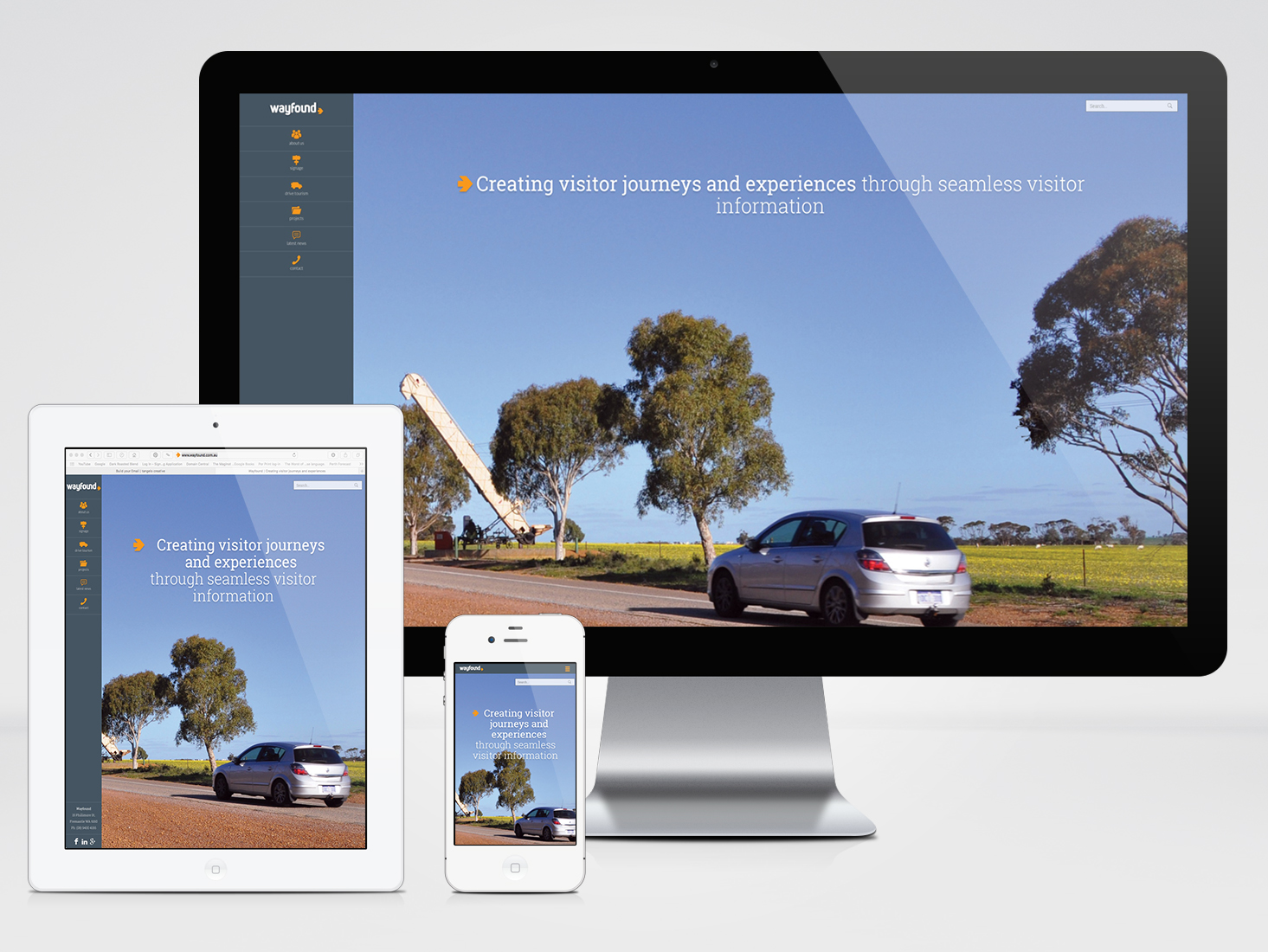
Wayfound’s responsive website reformats to suit the device it’s being viewed on.
So, what’s the difference between a mobile friendly website and a mobile app?
Both mobile apps and mobile friendly websites are accessed on a handheld devices such as smartphones and tablets.
A mobile friendly website (also known as a responsive website) reformats to suit the device it is being viewed on (e.g. smartphone, tablet or desktop computer) and also has a touch-screen interface. A non-responsive website does not reformat so you have to ‘pinch & pull’ to see the content. Responsive design is now the standard for website design.
Like any website, responsive sites can display text content, data, images and video. They can also access mobile-specific features such as click-to-call (to dial a phone number) or location-based mapping.
Apps are ‘applications’ that are downloaded and installed on your mobile device, much in the same way as installing software on your desktop computer. Users visit device-specific portals such as the App Store or Google Play in order to find and download apps for their devices. The app can either pull content and data from the Internet (similar to a website) or it can download the content so that it can be accessed without an Internet connection.
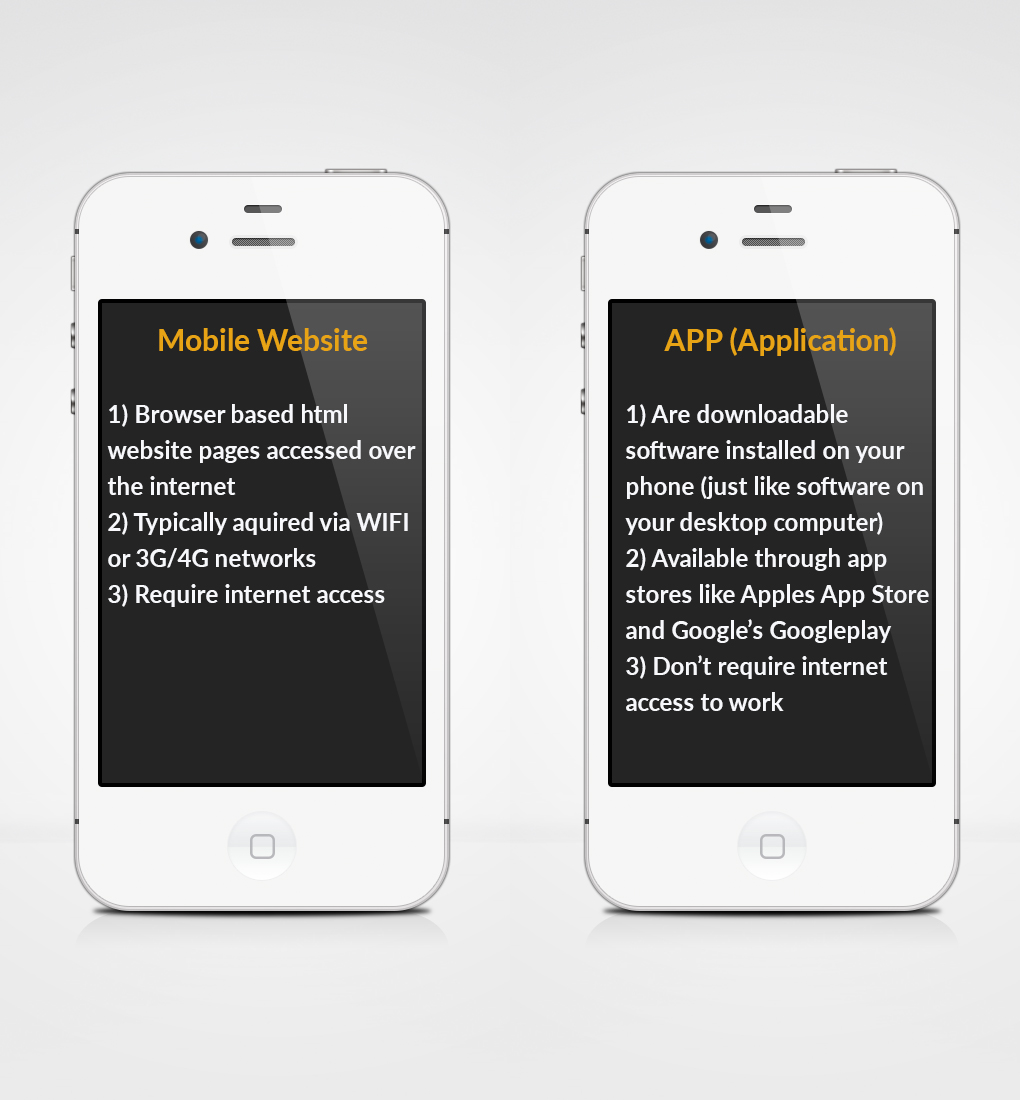
The main differences between mobile friendly websites and apps can be quickly summed up by this image.
Advantages of a website vs. an app
If your goals are primarily related to marketing, a responsive website is almost always going to make sense as a practical first step for you to be found on the web. (eg: Wheatbelt Way)
Immediacy – websites are instantly available
A mobile website is instantly accessible to users via a browser across a range of devices (iPhone, Android, BlackBerry, etc). Apps on the other hand require the user to first find the app, then download and install the app before the content or application can be viewed – a significant barrier between initial engagement and action/conversion.
Compatibility – websites are compatible across devices
A single mobile website can reach users across many different types of mobile devices, whereas apps require a separate version to be developed for each type of device.
Upgradability – websites can be updated instantly
A mobile website is much more dynamic than an app in terms of pure flexibility to update content. If you want to change the design or content of a mobile website once you make the changes, you simply update the live version on the web and the changes are immediately visible. Updating an app, on the other hand, requires the updates to be ‘pushed’ to users, which they then have to download to update the app on their device.
Findability – websites can be found easily
Mobile websites are much easier for users to find because their pages can be displayed in search results and listed in industry-specific directories. In contrast, apps are largely only found on the App Store or GooglePlay.
Shareability – websites can be shared easily by publishers and between users
Mobile website URLs are easily shared between users via a simple link (e.g. within an email or text message, Facebook or Twitter post). An app simply cannot be shared in this way.
Reach – websites have broader reach
Because a mobile website is accessible across platforms and can be easily shared among users, as well as search engines, it has far greater reach capability than an app.
Lifecycle – mobile websites can’t be deleted
The average shelf-life of an app is pretty short, less than 30 days according to some research. So unless your app is something truly unique and/or useful (ideally, both), it’s questionable how long it will last on a user’s device. Mobile websites on the other hand are always available for users to return to.
Time and cost – mobile websites are easier and less expensive to develop
Mobile website development is considerably more time and cost-effective than development of an app. Think around $10k for a website vs. $25k plus for an app.
Support and maintenance
The investment considerations of app vs website don’t end with the initial launch; properly supporting and maintaining an app (upgrades, testing, compatibility issues and ongoing development) is much more expensive and involved than supporting a website over time.
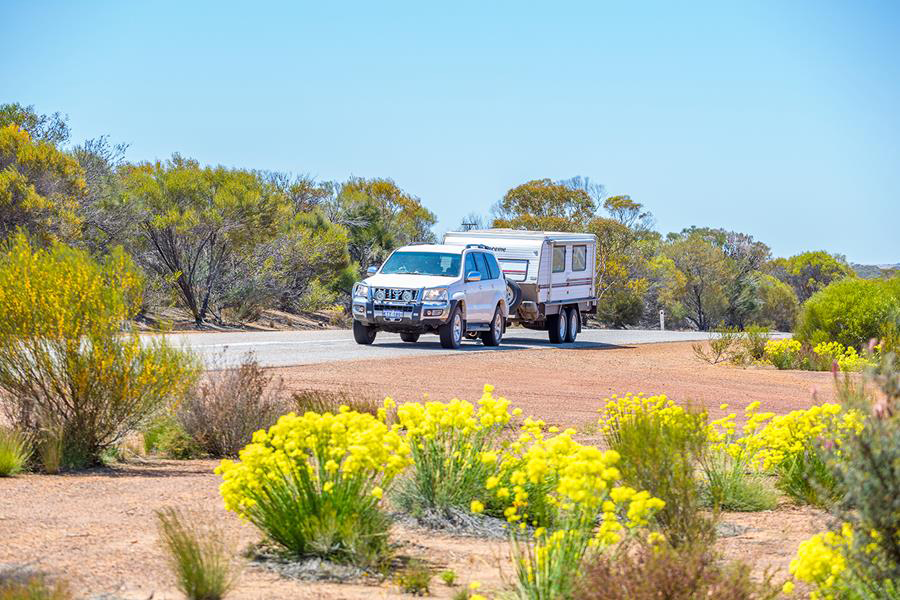
So which is better for our tourist trail – an app or a mobile (responsive) website?
Generally speaking, a mobile website should be as the first step in developing your trail’s web presence. Whereas an app is really only needed when you have a specific purpose that cannot be effectively accomplished with a website. In any case to be found on the web, you will need a responsive website Golden Quest Trail and if what they see on the website is of interest, that will encourage them to download the app, which you can promote on your website.
My trail is only a short walking trail around our town
If you are developing a walk trail around your town where WiFi or 3G/4G coverage is available then in most instances you won’t need an app. A responsive website in most cases will adequately cater for your visitor’s need. If your trail is around a small historic precinct or a museum then consider installing free WiFi for your visitors better enjoyment.
NOTE – If you install WiFi make sure your visitors have to log-on with an email address. This way you can build your visitor database and market to them or ask for feedback on your trail or attraction.
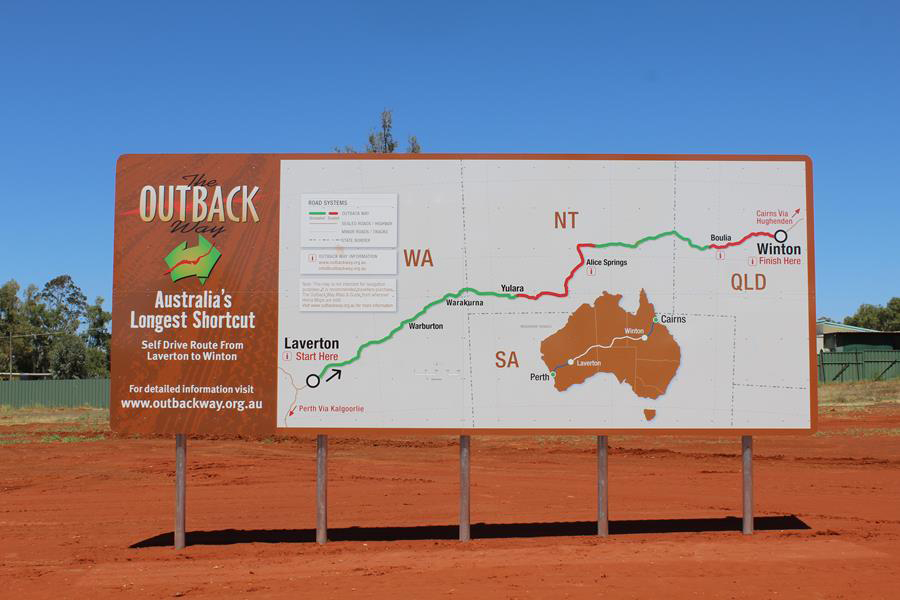
The Outback Way – Australia’s longest shortcut
My trail is in a remote region of Australia with very little Internet coverage
If your trail is largely out of WiFi range, then an app is probably the best way to go. As previously mentioned an app is totally self contained so all of the content can be loaded while you have access to the Internet before setting out. For larger drive trails, the content can be loaded in stages when visitors pass through towns along your trail. Think free WiFi – as this gives visitors a reason to stop and maybe spend some money in the town.
GPS (Global Positioning System)
All mobile devices have built in GPS which plots your position wherever you are in the world. This is one of the major advantages an app has over a website. With this technology, your app will allow you to notify your visitors when a navigation or interpretive point is coming up. This is called ‘Geolocation’. This is especially important on drive trails with long distances between stopping points.
Push notifications
An app has the ability to send what are called ‘push notifications’. This feature allows the trail operator to notify trail users of things like weather warnings, road hazards and missing persons. When a user of your trail app passes through a 3G/4G zone it will immediately post any push notifications to the user.
Built in safety registration
When someone goes missing in remote regions of Australia it can cost over $250,000 to mobilise search authorities to go and look for them. With an app, it’s easy to prompt people who are planning/travelling your trail to register with the trail organiser. They can register their itinerary and expected time on the trail. The Geolocation feature is then able to plot people as they pass through phone coverage zones. If someone doesn’t arrive at a certain location as expected then data is available about the last location they went through. For instance, if you’re travelling the Golden Quest Trail in the Eastern Goldfields of WA and your GPS pings you when you pass through Leonora and you don’t arrive in Laverton then authorities know where to start searching for you.
Login – Log off
Changed your mind and you’ve registered to drive a remote trail, not a problem. Because of the Geolocation feature if you decide to leave the trail at any point the app will push notify you to log- off the trail once you get outside of the trail route.
What’s in it for you?
If your trail is supported by local businesses isn’t it a good idea to support them? This generates interest and support from the local community. As part of any app development you can quickly develop a service directory giving visitors quick access to local service providers. This directory can contain basic required information such as opening hours, description of services and click-to-call phone numbers allowing visitors to make contact for meals, accomodation and fuel. All of which help to support the local business operator.
Social media
Don’t underestimate the power of social media. With an app it’s possible for visitors to take pictures directly through the app and post to their social media platforms (when they are out of range, the phone will store these and upload as soon as they are back within 3G/4G range). These photos can be watermarked with #yourtrailname and shared across all social media platforms. A great photo shared can generate huge interest in your trail.
Help us manage our trail
An app is easy for people to contact you directly and give you feedback on what worked, where they got lost, what was broken. With an app you can quickly set it up so a visitor can notify the trail organiser (and post a photo) of something that needs fixing (e.g.:a damaged sign or picnic table). If you interact with the visitor and acknowledge something isn’t right, this adds to a good experience on your trail and shows that you care and value their feedback.
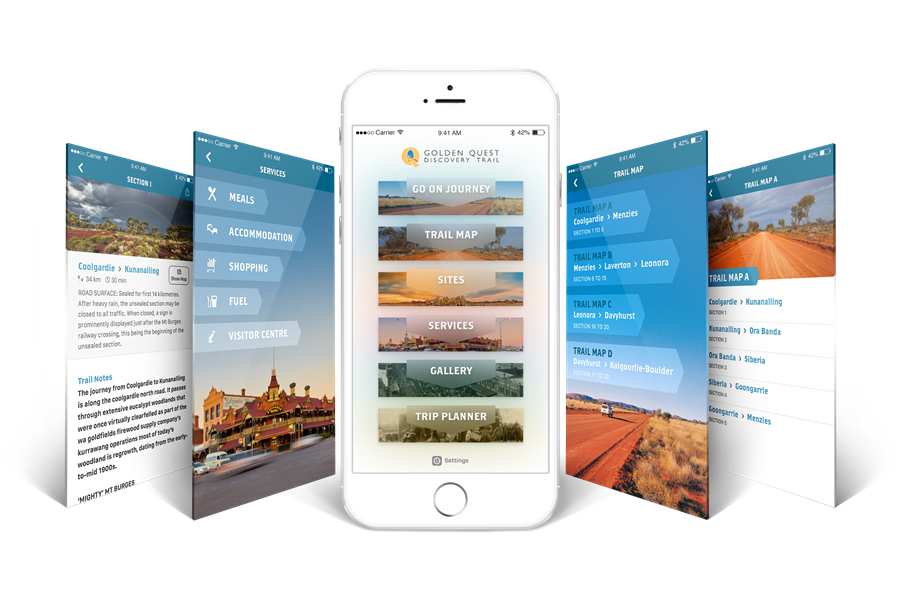
Golden Quest Discovery Trail – 1100km drive trail through the Eastern Goldfields of Western Australia.
We are Wayfound
Wayfound is a specialist consultancy that thinks strategically about tourism. We consider the whole visitor journey and advise destinations on how to best provide information to get the tourism experience right.
We work with state and local government, regional development organisations and tourism organisations to create tourism initiatives. We apply our backgrounds in tourism, economic development, branding, marketing and signage design to bring a deep understanding to this work.
Wayfound’s services
We are visitor information and tourism specialists
- Destination visitor information strategies – audit and advice
- Business cases and grant/funding applications
- Destination branding, design and marketing
- Tourism websites, apps and online marketing
- Tourism signage services and signage strategies
- Creation of interpretive trails – drive trail specialists
For further information or to speak with our consultants please contact Kim on 0410 449 375


